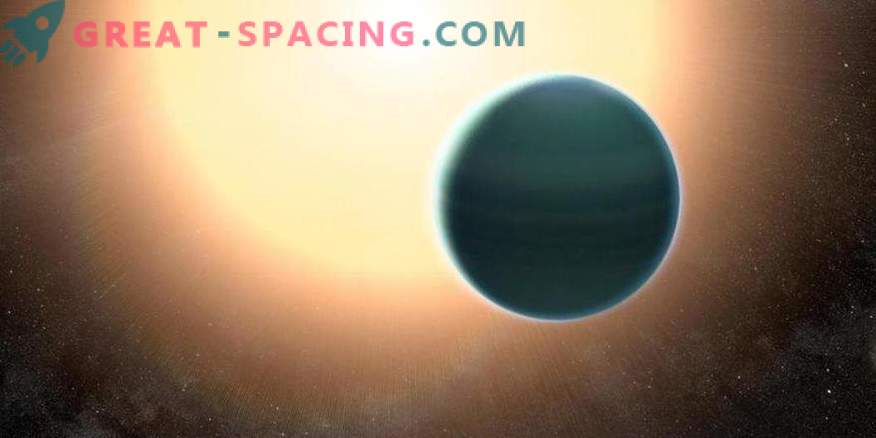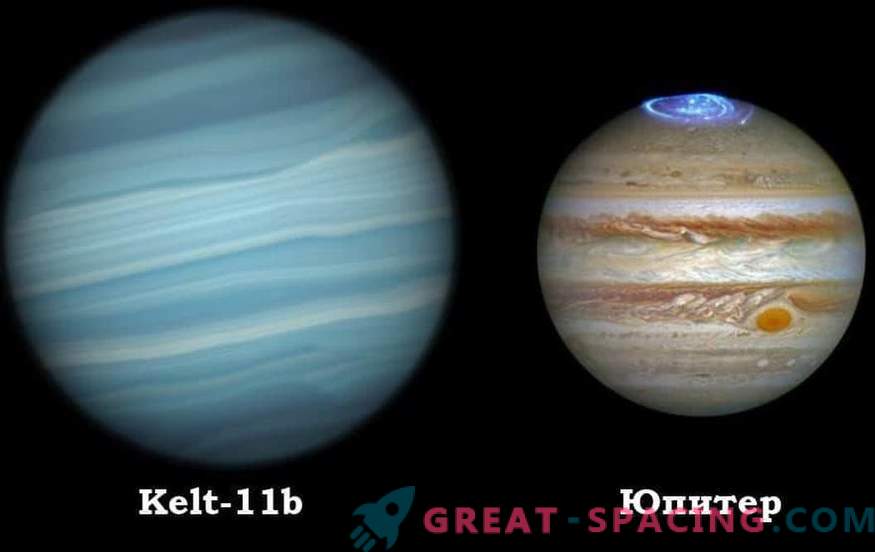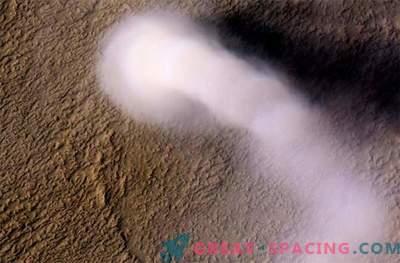
At a distance of 320 light years from us is the very unusual world of Kelt-11b. This planet is sometimes also called foam. But why and what characteristics surprise scientists?
Move to the territory of the constellation Leo, where the yellow subgiant Kelt-11. In 2016, using the transit method (the planet passes in front of a star, reducing its brightness level), an unusual gas giant Kelt-11b was found. The world rotates close to a star, spending only 5 days on full orbit.
Why does Kelt-11b attract attention? The fact is that we have an example of a “bloated planet”. It is 40% larger than our Jupiter, but it is 5 times less massive! The analysis showed that its density resembles the indicators of styrene foam, because of what it became known as an unusual foam plastic planet.

Comparative sizes of Kelt-11b and Jupiter
It is believed that the average surface temperature reaches 1712 K. In addition, at the time of transit it was possible to fix an incredibly dense atmospheric layer. Kelt-11b is considered the third exoplanet with the lowest density. Scientists still can not understand how this is possible, because this world is too huge for its own mass. It is also important to note the activity of the native star. KELT-11 seems incredibly bright, as it is in the process of being transformed into a red giant. This suggests that the star began to use nuclear fuel, merging hydrogen in the shell outside the core. Researchers believe that within 100 million years the star will swallow the planet.
Researchers believe that the solution to the density and bloating of the planet is hidden in the atmospheric composition. New data will be obtained with the launch of the space telescope James Webb. Therefore, KELT-11b foam exoplanet is regarded as an excellent test example that will help to understand the mechanism of how the planets swell.











































